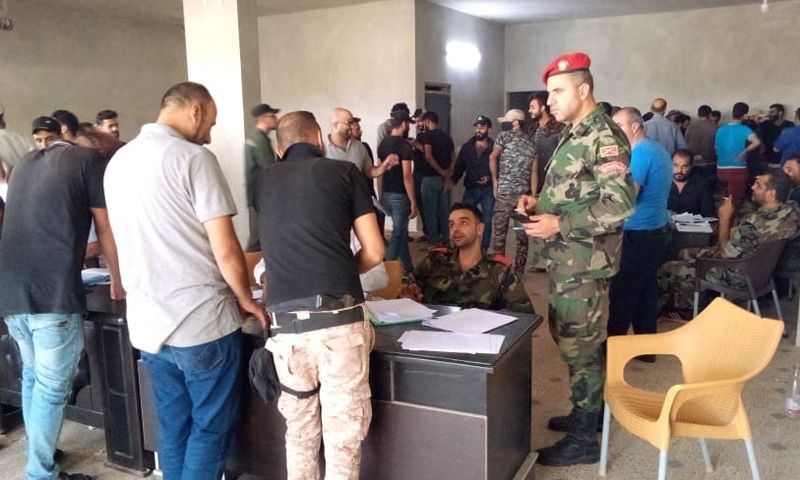Introduction
It’s been six years since the Russian intervention in Syria, an intervention the Syrian regime and Russia like to term as “war on terror”, which in fact was never anything but a war on the Syrians themselves. After losing control of most of Syria’s territory, the Syrian regime was on the verge of collapsing. However, the Russian intervention drastically changed the balance of power on the ground, and air.
Under the eyes of the world, the Russian forces bombarded civilians in Ghouta, Homs, Daraa, Aleppo, Idlib and elsewhere. In a letter to the United Nations in 2017, the White Helmets said that the Russian intervention has killed 12,000 civilians, including 380 children. There is no reliable data on what that number is today, but it certainly is much higher than in 2017. Eleven years into the conflict, there are about 6.6 million Syrian refugees who fled their country, while 6.2 million are displaced within Syria. The scale of displacement has skyrocketed ever since the Russian intervention in Syria.
Far from bringing any sense of peace and safety to Syria, it is now clear that the primary aim of Russia in Syria was to entrench its airforce and navy presence in the region and expand their military bases, namely the Hmeimim airbase in Lattakia and the Tartus naval facility.
In February 2016, the Russian Defense Ministry declared the establishment of the Russian Reconciliation Center for Syria, which was set up in line with agreements reached by Russia and the United States to facilitate the negotiations between the Syrian government and opposition and to organize humanitarian deliveries.
Yet ironically while the Russian Reconciliation Center was established in the Hmeimim base with a supposed aim of facilitating the reconciliation of armed groups “who have willingness to stop the combat actions and to negotiate for a truce,” it has proven to be merely a parallel path to their military operations in Syria to help the Syrian regime seize control of all areas which were outside its control. Far from being a vehicle for reconciliation and peace-making, these agreements signed under Russian guarantees led to the displacement of entire Syrian populations from cities and regions that were starved to death and forced to sign agreements that were never honored by the regime nor its allies.
Daraa always held a special strategic importance for the Syrian regime, Russia and Iran for many reasons. It is the cradle of the revolution and one of the sturdiest strongholds of the struggle against the regime. Importantly, it has close proximity to Israel and Jordan, especially the border-crossings with Jordan which are a necessary lifeline for the regime.
The first reconciliation agreement in Daraa was signed in 2018, which was continuously violated for four years. The repression escalated with the refusal of the people of Daraa to participate in the shame presidential elections held in May 2021 to re-elect Bashar Al-Assad. When the agreement was signed in 2018, the Russians claimed they were the guarantors, but not only did they fail in guaranteeing the implementation of the agreement, but also declared in 2021 that this agreement is no longer valid as the status quo has supposedly changed. As for the Syrian regime, it never committed to its promises and chose to continue its criminal practices of arbitrary detentions, forced disappearances, besieging towns and villages and eventually launching a deadly military campaign against Daraa Al-Balad and bombing civilians with heavy weapons.
Whether in Daraa or other areas, Russia and the Syrian regime were trying hard to promote the reconciliation areas as safe and suitable for the return of the displaced, in addition to holding conferences and seminars trying to convince the international community that the areas of reconciliation are ideal models to be implemented in all of Syria that will allegedly lead to stability and prepare for the return of the displaced people. Following our earlier analysis of the demise of the reconciliation agreement in Daraa, written before the latest escalation, this brief overview aims to further illustrate how the “reconciliation agreements” were never more than a tool for the Syrian regime and its allies to achieve submission and displacement of Syrians seen as disloyal to the regime. The displacement from Daraa towards Idlib never ceased since the agreement was signed, with people risking their lives to escape despite all the dangers of the treacherous journey and the threat facing their destination. This tells you everything you need to know about the way Syrian regime treats those it “reconciles” with.
Today, as the unprecedented displacement still goes on in various forms and a safe, voluntary and dignified return of more than half of Syria’s population remains the key issue for any hope of a lasting and stable peace in the country and the region, reporting on this reality is of paramount importance to prevent normalization and acceptance of such practices, which are designed to cement displacement and maintain the Syrian regime’s repressive grip on the Syrian population.
Reconciliation agreements in Syria
Reconciliation agreements in Syria have long been a tool used by the Syrian regime and Russia to seize areas they could not win over by military force. The logic goes as follows: besiege an area, starve its people, force them to surrender, blackmail them to sign, renege on all promises, intensify repression and eventually displace them. These agreements range from concessions made after a ceasefire in which opposition fighters remain involved in security and government functions (Daraa), to cases of practical opposition surrender, including evacuations of fighters or even entire communities (Eastern Ghouta). These agreements were usually signed when a stalemate was reached where the regime was not able to militarily take over despite relentless destruction of civilian areas with the help of Russian airforce. The tactics usually included starvation sieges, where the regime not only deprived the people in these areas from basic food and medicine needs, but also relentlessly attacks and shells them using air force, destroying infrastructure and killing innocents, ultimately forcing the area to surrender and sign a “reconciliation” agreement.
Syrian Association for Citizen’s Dignity has written a detailed briefing describing the regime’s strategy of achieving long term demographic change of such areas through displacement. In many cases the reconciliation agreements were its primary tool of such demographic change.
In August 2012, and in Daraya, the Syrian regime committed Syria’s worst and largest massacre that lasted for eight days, killing more than 700 residents of the city, most of whom were children, women and elderly, and only 512 of them could be identified. Eventually in August 2016, the regime forced the people of Daraya to sign an agreement that forcibly displaced them to Idlib and al-Kiswah. Unlike agreements signed in other areas, the regime’s delegation put forward harsh conditions, including entirely emptying the city based on decisions from the high command who requested “not to leave any trace of anyone inside Daraya, with the threat of invasion and extermination of the city, including in case of refusal.”
In 2018, opposition factions in Eastern Qalamoun, a town in Damascus suburbs, signed an agreement with the regime which effectively included the forced displacement of the original population to northern Syria. The first reconciliation agreement was signed in 2015 between the regime and the opposition factions in Eastern Qalamoun towns in Damascus suburbs.
The several agreements signed in Damascus suburbs such as Eastern Ghouta, Zabadani (part of four towns agreement), Wadi Barada and many others have not only resulted in the forced displacement of entire populations, but also paved the way to change the demographic reality in the region and replacing original populations with those loyal to the regime. In 2016, Assad explicitly and publicly stated the goals of this strategy when he spoke of “useful Syria”, an area of the country both geographically and demographically crucial to the continuation of his rule. To achieve this utopia of a loyal population concentrated in areas seen as strategically important, the Syrian regime unleashed a campaign of forced displacement and replacement which continues in various forms to this day.
On the other hand, despite Russia being a guarantor in most of those agreements, the Syrian regime did not honor its part and continued harassing and arbitrarily detaining many of the civilians who stayed behind and did not want to leave their homes, making the reconciliation areas the least safest and most vulnerable areas in Syria as was found in SACD’s latest report which indicated that 94% of Syrians in reconciliation areas do not feel safe due to the regime practices and lack to commitment to its promises.
Normalization of horror in reconciliation areas
In the latest report issued by the Syrian Association for Citizen’s Dignity, which included 533 respondents living in Assad-controlled areas, 31 percent of participants were in reconciliation areas, especially in Damascus countryside and Daraa. The most important findings were that the feeling of safety varied depending on the force in control, and it was worst of all in the Syrian regime-controlled areas. About 50 percent of people in Assad-controlled areas reported not feeling safe, including those who have not left. While 67 percent of the returnees from outside Syria do not feel safe, the areas of reconciliation that the Russians promote as safe areas were the worst where 94 percent said they did not feel safe.
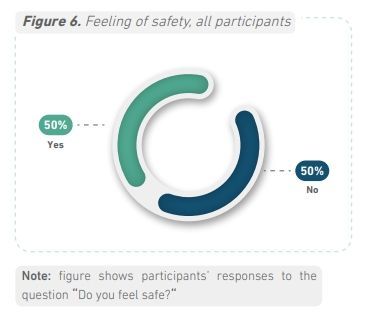
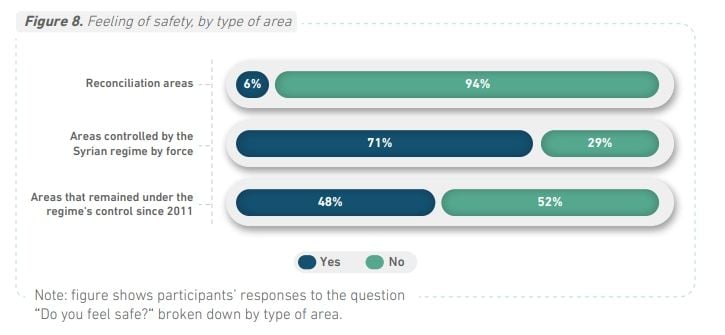
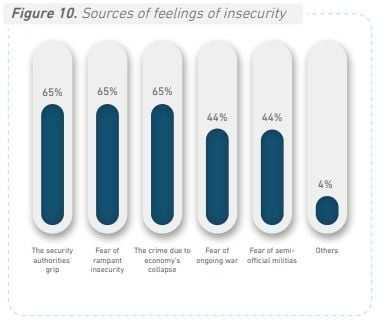
With regards to freedom of opinion and expression in the areas of reconciliation, more than 90 percent of the respondents in these areas indicated that they are unable to express their opinion. This rules out any possibility of the impartiality of any elections, and this is fundamentally incompatible with the concept of a safe environment, as it is certainly an environment in which no citizen can express his/her political opinions, ideas and aspirations.
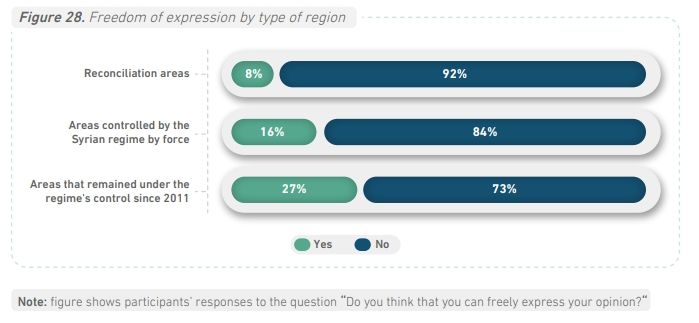
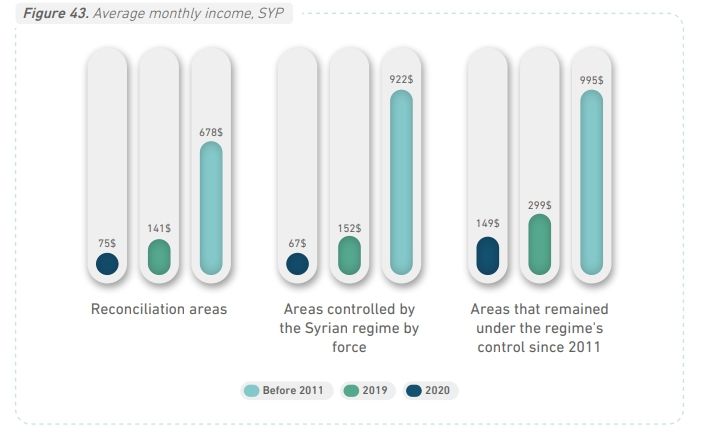
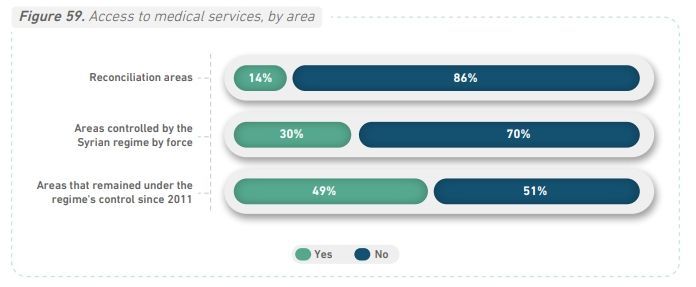
The question of Daraa
When trying to answer the question of the significance of Daraa, it is important to look at how it all started. At the end of February 2011, students wrote slogans denouncing the Assad regime on the walls of their school, inspired by the Arab Spring events in the region. One of the branches of security apparatus headed by Bashar Al Assad’s cousin, Mr. Atef Najib, rushed to arrest them. The students were tortured and their nails pulled out; their families were threatened with arrest when they tried to find out about their whereabouts. The protests spread to other schools and sparked widespread peaceful protests that spilled over to other governorates. The peaceful demonstrations continued in Daraa and across Syria over the next several months. The regime responded by killing protesters. The repression and mass arrests continued, and the situation evolved into armed clashes that intensified with increasing numbers of soldiers from the regime army defecting to the side of revolutionaries. The regime was eventually driven out of the entire region, and the conflict turned into continuous bombardment and huge battles, ultimately ending with Russian involvement. The overwhelming force exerted on the opposition factions and the besieged civilians forced them to sign a reconciliation agreement in mid-2018, with Russia as a guarantor.
Yet even before that, and with the beginning of the popular uprising in March 2011, the regime reduced its services to the governorate as a means of collective punishment for the anti-regime sentiment. Family and clan solidarity, in addition to agriculture, were the means of survival and resistance, with people pooling resources and sharing to provide for the basic daily needs of most households. More than 100 civil organizations worked during the opposition’s control period, helping to provide public services. This is how the people were surviving before the reconciliation agreement, which on paper was supposed to provide a return to normalcy.
The reconciliation agreement in Daraa resulted from negotiating rounds between the notables and opposition factions from Daraa, the most prominent of which is the group called “Sunni Youth” led by General Ahmed Al-Awda, and the Assad regime represented by the Military Operations Room in the south and the presence of generals from the Russian Hmeimim base. Most of the members of armed opposition groups remained in the region; a few dozen rejected the agreement and fled north.
Under the agreement, Russia pledged to ensure that all necessary services are provided to the region, including the return of students and employees to universities and state institutions. However, neither services nor jobs returned, and the living situation worsened with the exit of humanitarian institutions that were operating in opposition regions; residents were dependent on the resources of those interested in supporting these areas.
After the reconciliation agreement was signed in mid-2018, thousands of residents who were displaced as a result of the bombardment returned to their homes. They had a sense of improving safety as the open military conflict ceased and because most of the people in the region remained in the area.[1] But the living situation was poor, and did not improve despite the promises to provide more services.
The situation was made worse by the presence of the regime and Iranian militias, and the establishment of checkpoints that the regime put up and used to arrest the youth and shoot at those who do not stop while extorting money from civilians. These checkpoints also restricted the free movement of trade between cities and towns.
In March 2019 the situation escalated, and the people demonstrated against the local authorities’ attempt to erect a statue of Hafez al-Assad while ignoring the provision of key services to them. The regime responded by driving more of the youth into forced recruitment, and civilians and ex-AOG members began attacking military checkpoints at night in simulation of the early days of the military confrontation between the regime and defected soldiers and civilians who decided to defend themselves.
By the beginning of 2020, the regime had tried to storm several cities and towns in Daraa. And as the people were trying to defend themselves against the attacks on them, the situation escalated when the rebels seized soldiers who entered the town of Nahata for inspection and ignited a wave of daily fighting that ended with a new round of negotiations [2] and the expulsion of a number of young people towards the north of Syria. But the arrests, assassinations and forced recruitment of youth in the regime militias to fight in the Idlib and Aleppo countryside frontlines increased. Since April 2020, Assad’s forces have amassed on the outskirts of various cities and towns in the south and issued daily threats to storm them.
Moreover, ever since the 2018 agreement, the Daraa Martyrs Documentation Office has documented 618 martyrs despite the alleged cessation of hostilities in Daraa governorate, with an increase in the frequency of arrests and kidnappings. These hostilities have been taking place with clear repudiation of the regime and Russians from implementing the elements of the agreement that was supposed to allegedly bring stability to the region.
Eventually, the Russians explicitly revealed their intentions when the Russian general, Assad Allah, who is originally a Muslim Chechen, threatened the people of Daraa Al-Balad that the Iranian forces will storm the city if the people did not hand over the light weapons in their possession, which they had previously agreed with the Russians to keep according to the reconciliation agreement signed in 2018.
The Russian statement blatantly undermined the 2018 agreement, where it said: “We cannot impose our terms on the authorities, yet we can help you to reach an agreement. The 2018 agreement was made according to special circumstances and it was important to end the fighting, but today we are in the year 2021 and not in 2018, so all individual weapons must be handed over and the state must return to every town and neighborhood in southern Syria, that’s when everything will be in order, and the state will not stop until it restores all other areas.”
Eventually in September 2021, and after several negotiations and agreements took place between the Russians and the notables of Daraa Al-Balad and the Central Committee in Daraa Governorate, a new so-called reconciliation agreement was signed, which was a forced displacement plan in disguise. The agreement can be summarized as follows:
- A first round of negotiations based on a Russian roadmap that included the implementation of inspections by the Syrian security forces, the removal of those who rejected the agreement to Idlib, the return of civilians to their villages, the resolution of issues related to the civilian infrastructure such as electricity and water, and the settlement of the status of wanted persons. Yet the Syrian regime continued, while the negotiations were taking place, to mobilize its forces and tighten the siege on the residents of Daraa al-Balad, with the nonstop bombing of the besieged neighborhoods, and thus the military operation led to the suspension of negotiations and the failure to reach an agreement due to the intransigence of the Syrian regime forces.
- A second round of negotiations led to the deployment of the Russian military police to the besieged neighborhoods of Daraa, the imposition of a ceasefire on the Syrian regime forces and the displacement of a number of those who rejected the agreement to Idlib. This coincided with the continuation of Assad’s forces to mobilize his forces and heavy weaponry on the outskirts of the city of Daraa.
- The second round was followed by fierce bombardment by the Syrian regime forces and targeting of civilians using heavy weapons, artillery and machine guns against the besieged people in Daraa city. This round was preceded by the displacement of 78 people in two batches, including 25 children and a woman, with the increase in the pace of the military attacks. This was accompanied by the insistence of the Syrian regime and its allies to violate every new ceasefire agreement. In response, the Western Central Committee in Daraa announced the general mobilization in the province and entered into a confrontation with the Syrian regime forces and its sectarian militias to end the aggression.
After a month and a half after the siege, an agreement was reached between the central committee in Daraa and the security committee of the regime, consisting of Hussam Luqa, Ghayath Dallah and Louay Al-Ali to end the siege, and expel those who rejected the deal to Idlib. However, the Fourth Division and the 15th Division, supported by Iran, worked to breach the agreement and mobilize more military forces to storm the city.
Events accelerated further after the Russian statement was issued. The civil and revolutionary actors called for a general strike in Daraa which began on October 29, 2021 until the siege of Daraa Al-Balad was lifted. In turn, the Syrian regime officially announced the start of its implementation of a military operation in Daraa, claiming that the operation was to eliminate “terrorists”. Civilians, particularly women and children were targeted with artillery, mortars and tanks, followed by a violent attack launched by the Syrian regime forces and Iranian militias on the city with the aim of displacing its people. This marked Daraa entering a new phase of the conflict after the regime has violated the reconciliation agreement signed in 2018.
Every province in Daraa rallied to support Daraa city which was enduring a harsh military campaign carried out by the Fourth Division. Soon the battles turned into clashes that affected the entire territory of the province, and the bombing led to the death of three children from the family of Al-Zoubi in the town of Al-Yadouda, marking the end of the first day of the campaign with the martyrdom of 11 civilians in the neighborhoods of Daraa al-Balad, al-Yadudah, and Tafas, including a woman and four children in the town of al-Yadudah alone, in addition to the infliction of many injuries among civilians, most of whom were children and women.
The Syrian regime’s officers, who were previously arrested by the people of Daraa during the battles, stated that the battle of Daraa was following orders by the Iranian militias. They also mentioned that the main motive of the campaign was to carry out sectarian revenge against the people of Daraa, as the news and videos spread which clearly showed that the orders given to soldiers before the attack on Daraa aim to take revenge as one of the officers of the Fourth Division said: “We have people who died here, we are coming to take their revenge and wipe the land with [our enemies’] dignity.”
More importantly, the role of the Shiite militias was not only limited to incitement, but they also participated in raids, bombings, and the targeting of civilians, according to what activists from Daraa province have documented.
The Syrian regime seized the opportunity, led by the Ghaith Forces of the Fourth Division, headed by Ghayath Dallah, to return to its usual method of looting, blocking roads, besieging and bombing civilians, followed by imposing extortionate fees on civilians to allow them to leave their besieged areas to save their lives and their children. Some had to give up their house furniture to the Syrian regime forces because they did not have enough money to pay.
The outcome of the crimes of Syrian regime and Russia during the month of August reached 37 martyrs, including 5 children and 4 women. There was also documentation of death under torture under illegal conditions of detention in the prisons of the regime forces, with the continuation of arrests, kidnapping and enforced disappearances by the security branches of the regime forces in Daraa governorate, with at least 12 people arbitrarily detained and kidnapped by Syrian regime forces.
The end of “reconciliation agreements”?
“Because we refuse to kill others, and death to ourselves, and because we have committed to implementing the terms of the agreement, we, the people of Daraa, demand our deportation to a safe place to avoid war because it will be a disaster for us, and we will hand over the city of Daraa al-Balad to the regime, devoid of residents.”
With these words, the people of Daraa and its clans addressed the forces of the Syrian regime and its Iranian allies that mobilized their forces to storm the city, after the siege which lasted for more than a month, resulting from the Russians’ threat to storm the city alongside the Iranian militias after the failure of negotiations between the central committees in Daraa and the Russians on handing over light weapons.
Bizarrely, in the midst of battles, killings and displacement in breach to the ‘reconciliation’ agreement signed in Daraa, Russia organized a ‘return’ conference in Damascus in November 2020 to encourage the return of Syrian refugees back to Syria falsely claiming that the situation is safe for the return of the displaced. How “safe” Syria truly is for refugees to return can be best determined from the reports by the Syrian Association for Citizen’s Dignity, Amnesty International, Human Rights Watch, UN COI in Syria and others have repeatedly stated and documented how the Syrian regime continues to target returnees for enforced disappearance, arbitray arrest, killings, extortion forced recruitment and harassment.
Evidence clearly shows that the Syrian regime, alongside its Russian and Iranian allies, does not aim to use “reconciliation agreements” to establish an environment suitable for the return of the displaced people, but rather to secure full control of the territory with negligible numbers of the original population. The ultimate goal of this strategy is to attract reconstruction funds, and eventually bring in populations loyal to the regime, often from different sectarian groups to replace the original population. Such efforts are intensively spearheaded by Iran and its loyal militias.
The model applied in the south and its resulting effects, confirm once again that the reconciliation model orchestrated by Russia and the Syrian regime, with the support of Iran, is very far from attaining any peace and stability in the region.
The Syrian regime and Russia reaped their last reconciliation the fruit of their efforts in Daraa, which was forced to sign yet another agreement, not its first but very likely its last, after enduring a siege and ferocious attacks on civilians by Russia and the regime which began in September 2021. The terms of this last agreement involved the evacuation of 70 prominent opposition figures with their families from the city to areas under opposition control in the North. This is in addition to the entry to of the Syrian regime’s army and the military police to Daraa Al-Balad and raising their flag which also included installing checkpoints and raid operations. Men who did not leave Daraa were required to submit requests to regularize their status.
On the 3rd of September 2021, the Central Committee in Daraa announced the collapse of negotiations and that the only solution before the people of Daraa is displacement to Jordan and Turkey. This was one of many silent forced displacements that took place all over Syria, mainly perpetrated by the Syrian regime and its Iranian and Russian allies. The aim of this dangerous policy is for the regime to gain control over territories and established its goal of ‘useful Syria’ regardless of how outrageous and inhumane the price is. This regime has proven over and over how unreliable it is, and this proves that no safe environment can ever exist under the rule of the Syrian regime.
[1] From an interview conducted by SACD with Abu Yasser, a resident of Busra Al-Sham, May 2020
[2] From an interview conducted by SACD with Mohammad, 25 years old from the town of Nahta, May 2020.
- Cover photo: Implementation of the reconciliation agreement in Daraa – September 1, 2021 (Local Networks)
